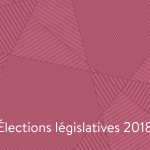In part one, I tried to disentangle the modern “trend” of depoliticizing important parts of the political life with a special reference to monetary policy and Central Banks (CBs). After a brief overview of the historical role of the CBs and the dominance of the new monetary consensus, I proceeded with the critical evaluation of the arguments in favor of Central Bank Independence (CBI) and the potentially high uncertainty involved in granting independence to a CB. In what remains, I will examine the distributional consequences of monetary policy and how the preferences of different socioeconomic groups translate into policies. Finally, I present a set of concrete “policy recommendations” towards the final goal of democratizing monetary policy. The proposals should not be seen as alternatives but rather as interlinked and mutually reinforcing.
IV. Policy preferences and distributional consequences
Stirling[1] has observed a long-standing practice of “closing down” “wider policy discourses on science and technology choice[s]”, with a clear preference towards “unitary and prescriptive policy advice”. Simply put, for several reasons (most relating to power asymmetries among actors), policy advice tends to highlight one path of action (out of many possible paths that get dismissed without being further explored) that appears “preferable under the particular framing conditions privileged”, in an effort to deliver a “clear, practical justification for decision making”. I will examine how these dynamics operate in the context of monetary policy.
The conventional wisdom holds[2] that there is a wide consensus among economic actors and groups of what “good monetary policy” is. Moreover, and contrary to fiscal policy that involves distributional trade-offs[3], monetary policy appears as a “disinterested” part of economic policy[4]. I respectfully disagree. Having argued that CBI relies on contestable arguments about economic outcomes (section III) I will try to demonstrate that delegating to technocrats does not apoliticize monetary policy (both in terms of policy preferences and distributional consequences) –on the contrary. As Stiglitz argues[5] “the decisions made by [CBs] are not just technical (…) they involve trade-offs, judgements about whether the risks of inflation are worth the benefits of lower unemployment. These trade-offs involve values.” I will argue that these values show a clear bias towards maintaining a low-inflation environment above anything else.
We live in an era of high capital (international) mobility –something not seen since the gold standard era. In section I, I argued that capital mobility constraints a government’s desired macroeconomic policy (a country can have mostly two of the following: fixed exchange rate, free capital movement, an independent monetary policy –Mundell-Fleming model). Here I focus (building on Frieden’s work) on the distributional consequences of high capital mobility. Some early conclusions are almost obvious: in the long-run, financial integration will favor owners of capital (more investment options available) and hurt labor (unions will lose bargaining power[6]). That’s standard Heckscher-Ohlin[7]. But in the short(er)-run, the issue is more complex. Things start becoming interesting when we realize that we live in a more multifarious world than that of H-O. The H-O model assumes perfect mobility (of both capital and labor). In reality, some factors may be mobile and others specific (e.g. skilled labor is more industry-specific than unskilled labor and financial capital is mobile while physical capital is industry-specific). Thus when I talk about capital mobility I refer to financial capital. In a world where the economy is organized in sectors (and given that some factors are more mobile than others) an increase in clothes’ prices is good for workers (and owners) in the garment industry not for workers as a class[8]. Financial integration will thus benefit owners of financial capital in capital-exporting countries (capital will move from low to higher interest rates) and for owners of sector-specific assets (since they can borrow at lower interest rates) in capital-importing countries. Empirically, we can offer support by observing that historical support for financial deregulation in the US comes from the country’s financial centers and multinational corporations (MNCs) and is opposed by domestic manufacturing –in accordance with our model. Based on the discussion above (and under the Mundell-Fleming framework[9]), Figure 1 gives a rough map of sectoral preferences (note that variation is not dichotomous but along a continuum).
FIGURE 1: Policy preferences of socioeconomic groups under capital mobility

Source: modified from Frieden (1991:445)
Due to space constraints I won’t go through much detail. Under the framework, fixing the rate implies prioritizing currency stability over the power of macroeconomic policy to affect domestic prices. This is attractive to two groups that engage heavily in international trade and payments (right side of the table) because they are sensitive to currency fluctuations and indifferent about domestic macroeconomic conditions (they can always shift their business to other countries). The opposite is true for nontradables and import-competing producers that both target the domestic market. Exchange rate preferences affect macroeconomic preferences: international traders would prefer a weak currency (read monetary expansion) and investors low (and stable) inflation and strong currencies. Figure 1 casts serious doubt over the “disinterested” nature of monetary policy view. But in order to fully understand the policy implications of these preferences we should examine how CBs’ personnel is hired.
V. From preferences to policies
In modern democratic systems, delegating power is the norm. There is no perceived contradiction between democracy and delegating power to institutions with some degree of independence. Most day-to-day policymaking is out of our hands (and -at least part of it- rightfully so). Democratic control does not equal direct (“unfiltered”) control by the public –this is the essence of representative democracy. In today’s democracies, public accountability can also be achieved not by elected officials but via appointees of the elected officials. The tension with democratic values occurs when decision-makers are neither appointed nor confirmed by the elected –and this is more often than not the case with monetary policy and CBs[10].
A CB’s decisions have important distributional consequences (both inter- and intra-generational): investors benefit from low and stable inflation. Wage-earners benefit from a growing economy with low levels of unemployment. If inflation increases, bond holders are hurt. If unemployment increases, workers (especially the marginalized) are in danger. Retired workers will benefit more from low inflation (since they rely on savings) but their children may be more affected by economic slowdowns. In an environment of high uncertainty, finding the right balance between growth and employment relies –also– on values (section IV). These values are, in turn, affected by our interests and our social environment[11]. The majority of individuals appointed to CB Boards are bankers or come from the investment community[12] –with small representation from industry and few representatives from labor– and thus, the pluralism of the views represented will be less than optimal[13]. Given the wide distributional consequences of monetary policy, shouldn’t the values expressed be more representative of the values of those that comprise society? Of course, we need expertise to run a CB and, thus, bankers naturally come in mind. The argument I make is that we can find expertise also outside the financial industry. By broadening out inputs and including in the decision-making process representatives from the government/parliament, other recognized economic associations, important members of the academia and other relevant policy demanders[14], we could “enhance the knowledge base informing decisions”[15], avoid a “premature lock-in”, and reach more “collectively robust”[16] results.
The policy preferences of the segment of society that forms the majority of CB Boards (Figure 1, bottom right) along with the dominance of the neoliberal consensus (section I) and the financial integration (section IV) play a major role in determining the goals of monetary policy. Stiglitz was among the most prominent economists to warn against this inflationary obsession of our CBs. Among the three main indicators of a healthy economy (GDP growth, unemployment level, inflation) we focus on the third. Why? Stiglitz gives three reasons: (1) inflation is costly, (2) it builds upon itself, (3) is costly to reverse –and he casts doubts upon each one. Empirical studies have found that inflation levels need to be over 40% per year to fall into high inflation/low growth trap while Stiglitz (p.212) finds no statistical evidence that inflation builds upon itself and argues (p. 215) that “very large reductions in inflation (…) can be achieved at very low costs”. We should take these results with a bit of salt (as Stiglitz himself admits) but they warn against the extremes and help put things into perspective. Given the complexity of monetary policy and our imperfect understanding of how the economy works, we should be very cautious when we prioritize inflation over everything else. Perhaps a new balance is needed and including more stakeholders in the process while hiring expertise outside the banking industry is a way to achieve it.
VI. Conclusions, “opening up” monetary policy choices
The ideological turn from the ‘70s on placed low inflation at the center of macroeconomic policy (sections I,II). The Keynesian “fine tuning” was more complicated than it was initially thought since macroeconomic “activism” would only accelerate wage and price inflation (in the long-run). Thus, since politicians could not affect the real economy permanently, the best thing they could do is to achieve low inflation. Delegating monetary policy to an (independent) CB enhances the credibility of the government’s commitment and solves the time inconsistency problem. CBI however, has not evaded criticism (section III). Scholars find that factors like openness and political stability have much more impact on inflation than CBI. At the same time, political independence and inflation are jointly determined by deeper social and political factors. It has been argued that low inflation has not to do so much with CBI but it depends on the existence of a social and political “coalition” that favors price stability.
In the turbulent and uncertain waters of economic policy CBs –and CBI– are a much-needed anchor. In Plato’s Republic it was the seasoned captain, the man of the profession with the necessary knowledge (an “expert” in today’s terms) that would take command of the Ship of State during the storm and not a random sailor elected by the crew. And he’s got a point there. But Plato is not exactly known for the value he placed on democracy. We need expertise and there are strong arguments in favor of CBI and its role in maintaining a stable macroeconomic environment (section II,III) while, often, a CB’s decisions are indeed just technical –but not always. And one way to democratize monetary policy and limit the danger that the interests and values of one segment of society will “dominate” monetary policymaking, is to expand the notion of “expertise” by hiring more (intellectually) diverse personnel at CBs and by hiring experts outside the banking industry. Another way of increasing the pluralism of inputs (and possibly the pluralism of outputs) of monetary policymaking is to include in the decision-making process more stakeholders. Wage-earners or manufacture will also be affected by monetary policy, shouldn’t they have a say? On top of increasing transparency, this move will also make a CB’s decisions more representative of the values (and interests) of those that comprise society. Finally, in the EU/EMU context, strengthening the channels of political representation and oversight might be a move to the right direction. As McNamara (2001:66) observes, while national CBs have usually “a routinized system of consultation with other (…) bodies, the ECB is only minimally linked to the political bodies of the EU”.
Heads of States and Governments are held accountable for how their economies perform regardless of their power over it. In EU a stringent legal framework (SGP, European Semester, etc.) has removed the scope for discretionary fiscal policy and with CBI governments also lost control over monetary policy. As we’ve seen there are good reasons for that. However, as we also have seen CBI alone does not reduce the inflation levels. There is a need for a “social pact” against inflation and the measures proposed here (more openness and multiple stakeholders) will work in favor of a CB’s goals in the long-run by enabling it to build broader coalitions. Of course, such “widening of social agency (…) can be problematic for incumbent interests”[17]. But challenging them is necessary if we want to move “beyond the singular narratives and associated pathways which dominate current agendas [and] to embrace” a richer, more divergent “range of alternatives”[18] -especially the most neglected ones. And while it is true that all these changes proposed here “may present [great] institutional [economic] and political challenges”, they “offer ways to help enhance both technical robustness, societal relevance and democratic accountability”[19] of monetary policymaking.
[2] See for example Drazen (2002) who, albeit going to considerable depths to prove that different interest groups share an agreement over what a good monetary policy is, fails to provide a definition himself (perhaps because everyone already knows).
[3] Concerning for example who bears the burden of the taxes or who benefits from transfer payments.
[4] Ibid p.7 (Drazen builds his entire argument over the non-inconsistency of CBI with democracy on that –shaky–stone).
[6] Capital-owners will “exit” instead of acceding to labor demands. Note moreover that the increased bargaining power of capital (in an era of high capital mobility across borders) is not gained at the expense of labor alone. Since the ‘80s there has been a shift regarding the balance of power between the States and the markets, with governments feeling the need to provide more attractive conditions for investors (in an era of high financial integration it is almost impossible for an individual government to insists on, say, high capital taxation when others are reducing it).
[7] Note that I study exclusively the advanced industrialized countries. The H-O model is, of course, more complicated than what I’ve described. Since it focuses on the abundant factors of production, it predicts that in a developing country (where we assume that the abundant factor is labor) increased capital mobility (like increased world trade) will hurt capital (the scarce factor) and benefit labor (the abundant factor).
[8] In Frieden’s (1991:436) words “[in the specific-factors approach] changes in the relative prices of goods have their principal effect on the sector-specific producers of the goods, rather than on a whole class of factor owners.”
[9] i.e. where there is a trade-off between monetary policy autonomy and exchange rate stability (remember that we take high capital mobility for granted).
[10] Stiglitz (1998:217) notes for example that in the USA the Open Market Committee includes presidents of the regional CBs that are chosen by the CB’s Board and no elected official (President or Congress) has a direct say in their appointments.
[11] I use the term in the strict sense –the people that constitute our social circle, our everyday interactions.
[12] And those that do not “they quickly get captured by the banking community in which they are immersed” (Stiglitz, 1998:217).
[13] See McNamara (2001:53-56).
[14] To be clear, I do not imply that these groups should necessarily have voting powers but that they should be part of the expanded pool of a CB’s expertise and participate in deliberations, policy discussions, and/or have observation status in the CB’s meetings (this last remark applies particularly to the elected representatives). Indeed, Stiglitz (2008:222) argues that some of the most successful Chairpersons of Fed like P. Volcker and A. Burns understood that a CB is a “political institution” and “struck a balance [between expertise and political oversight], anticipating the political response to their actions and, to some degree, accommodating it”. The CBs’ instrument independence will remain intact but the diversity of inputs will increase








see also D. Rodrik (2018) Is Populism Necessarily Bad Economics?
http://j.mp/2DoVdBy